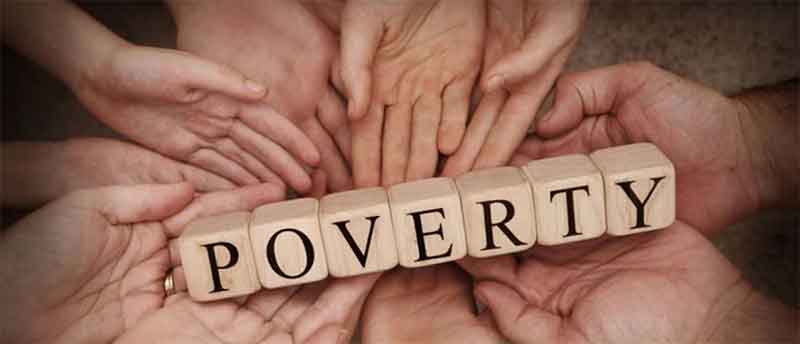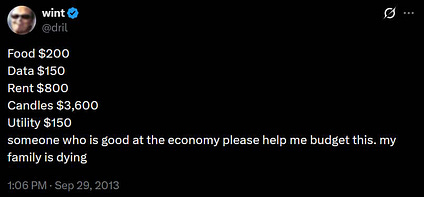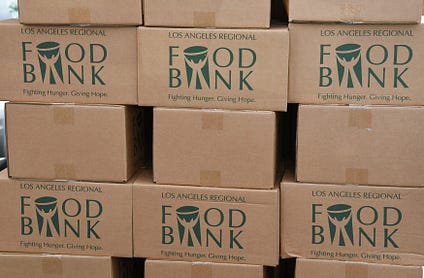Extreme Poverty Eradication: What does the grass-root information show? – Countercurrents

Report on Kerala’s Extreme Poverty Eradication Program and its Alignment with Sustainable Development Goals
Introduction
A recent declaration by the government of Kerala announced the state as being free from ‘extreme poverty’. This initiative is a direct attempt to address Sustainable Development Goal 1 (SDG 1: No Poverty). However, the declaration has been met with scrutiny from economists and social activists regarding its methodology and actual impact. This report analyzes the program’s implementation and outcomes at the grassroots level, evaluating its effectiveness in contributing to the Sustainable Development Goals (SDGs), particularly SDG 1 (No Poverty), SDG 2 (Zero Hunger), SDG 3 (Good Health and Well-being), and SDG 16 (Peace, Justice, and Strong Institutions).
Methodological Framework and Institutional Accountability (SDG 16)
Beneficiary Identification Process
The process for identifying individuals experiencing extreme poverty raises significant concerns regarding its alignment with the principles of effective and accountable institutions as outlined in SDG 16. The methodology employed was as follows:
- Initial identification was conducted by Panchayat members, ASHA workers, and Anganwadi teachers based on a handbook from the Kerala Institute of Local Administration (KILA).
- The list was subsequently reviewed by focus groups and vetted by block and district-level resource persons before presentation to the Gram Sabha.
The primary flaw in this approach is the absence of empirical data collection through structured surveys or pre-tested questionnaires. The reliance on impressionistic judgment introduces a high degree of subjectivity, undermining the scientific basis required for effective poverty targeting and violating the principles of transparent and evidence-based governance central to SDG 16.
Discrepancies and Exclusion Errors
The subjective methodology has led to significant discrepancies, potentially hindering progress towards SDG 10 (Reduced Inequalities) by excluding vulnerable populations.
- The final number of identified individuals was significantly lower than the number of beneficiaries in existing poverty alleviation schemes, such as the Anthyodaya Anna Yojana (AAY) and the state’s Ashraya scheme.
- A strict provision in the KILA handbook mandated the exclusion of households already covered by the Ashraya scheme, despite many continuing to live in extreme poverty.
- Elected members reported that their initial lists of the extremely poor were substantially reduced during the final approval process.
These exclusions suggest that the program’s scope may be too narrow to achieve the comprehensive poverty reduction targets of SDG 1.
Grassroots Assessment of Program Impact on SDGs
Profile of Identified Households: A Multi-dimensional Challenge
A field assessment covering ten grama panchayats and one municipal ward revealed that the identified households face multi-dimensional deprivation, touching upon several SDGs.
- SDG 11 (Sustainable Cities and Communities): A significant portion of the identified households were either homeless or lived in inadequate ‘kutcha’ houses (12 of 30 rural households and 8 of 12 urban households).
- SDG 3 (Good Health and Well-being): The program beneficiaries exhibit severe health vulnerabilities. In the surveyed panchayat wards, 17 of 30 households had at least one person who was seriously ill or disabled. Furthermore, an alarmingly high percentage of individuals were mentally challenged—12% in the rural sample and 20% in the urban sample. This highlights a critical need for integrated health support to achieve SDG 3.
Analysis of Support Interventions
The support provided by local bodies, funded from their ‘own funds’, varied across households. While some interventions align with specific SDGs, the primary support mechanism falls short of its goal.
- Housing and Infrastructure (SDG 11): Positive steps included providing houses under the LIFE mission, offering financial support for home repairs, and transferring some urban households to rented accommodations with the rent paid by the municipal corporation.
- Livelihood (SDG 1): Support for sustainable livelihoods was minimal, with only one individual receiving a grant (Rs. 50,000) to start a small shop.
- Food Security (SDG 2): The most consistent intervention was the provision of a monthly food kit. However, its delivery was often inconsistent, ranging from monthly to quarterly. The contents and value of the kit varied significantly between local bodies.
Conclusion: Insufficient Progress Towards SDG 1 (No Poverty) and SDG 2 (Zero Hunger)
Financial Valuation of Consumption Support
An analysis of the food kit, the program’s primary tool for poverty eradication, reveals that its value is insufficient to lift beneficiaries out of extreme poverty.
- The average daily value of the food kit per person was calculated at Rs. 12.91 in rural areas and Rs. 16.35 in urban areas.
- Even when combined with the imputed value of free cereals from the AAY program, the total daily food consumption value only reaches Rs. 19.83 (rural) and Rs. 23.61 (urban).
This level of support is inadequate to meet the nutritional and consumption needs required to achieve SDG 2 (Zero Hunger).
Assessment Against Poverty Benchmarks
The financial support provided through the Extreme Poverty Eradication Program (EPEP) fails to meet established poverty thresholds.
- The daily support value is well below India’s national poverty line.
- It constitutes barely one-third of the World Bank’s international poverty line of $3.20 PPP per day.
Therefore, the claim that the program fills the consumption gap to eradicate extreme poverty is not substantiated by the evidence. The initiative, while well-intentioned, requires significant methodological revision and increased financial commitment to make a meaningful impact on achieving SDG 1 and ensuring no one is left behind.
Analysis of Sustainable Development Goals in the Article
1. Which SDGs are addressed or connected to the issues highlighted in the article?
-
SDG 1: No Poverty
- The entire article is centered on the concept of poverty, specifically the Kerala government’s declaration of being “free from ‘extreme poverty’”. It discusses the definition of poverty as a “state of deprivation” of basic necessities and analyzes the methods used to identify and support the “extremely poor”.
-
SDG 2: Zero Hunger
- The article directly addresses food security for the poor. It details interventions like the Anthyodaya Anna Yojana (AAY) program and the provision of a “free food kit” as a primary form of support under the Extreme Poverty Eradication Program (EPEP). It also analyzes the monetary value and sufficiency of this food support.
-
SDG 3: Good Health and Well-being
- The health status of the identified poor population is a significant theme. The article notes that in many households, “at least one person was seriously ill / disabled” and highlights a shocking prevalence of individuals who were “mentally challenged,” including some who were “wanderers”. This connects poverty directly to poor health outcomes.
-
SDG 10: Reduced Inequalities
- The article deals with the most vulnerable segment of the population, referred to as “destitutes” and the “extremely poor”. The government programs discussed, such as the EPEP and Ashraya scheme, are fundamentally aimed at reducing inequality by targeting and providing support to those at the very bottom of the economic ladder.
-
SDG 11: Sustainable Cities and Communities
- The issue of housing and shelter is explicitly mentioned as a basic necessity. The analysis finds that a significant number of the identified households “lived in kutcha houses, or were homeless”. It also describes government interventions to address this, such as providing houses under the LIFE mission, financial support for repairs, and transferring families to rented houses.
2. What specific targets under those SDGs can be identified based on the article’s content?
-
Under SDG 1 (No Poverty):
- Target 1.1: By 2030, eradicate extreme poverty for all people everywhere. The article’s central theme is the Kerala government’s declaration of making the state “free from ‘extreme poverty’,” which is a direct attempt to meet this target at a sub-national level.
- Target 1.2: By 2030, reduce at least by half the proportion of men, women and children of all ages living in poverty in all its dimensions according to national definitions. The article discusses poverty beyond just income, mentioning deprivation of “food, clothing and shelter,” and the presence of illness and disability, which are dimensions of poverty.
- Target 1.3: Implement nationally appropriate social protection systems and measures for all, including floors, and by 2030 achieve substantial coverage of the poor and the vulnerable. The article explicitly mentions several social protection schemes: the Anthyodaya Anna Yojana (AAY), the state’s Ashraya scheme, the Extreme Poverty Eradication Program (EPEP), and housing support under the LIFE mission.
-
Under SDG 2 (Zero Hunger):
- Target 2.1: By 2030, end hunger and ensure access by all people, in particular the poor and people in vulnerable situations, including infants, to safe, nutritious and sufficient food all year round. The provision of a “free food kit” and cereals under the AAY program are direct measures aimed at ensuring food access for the “extremely poor”. The article questions the sufficiency of this support by calculating its low daily monetary value.
-
Under SDG 3 (Good Health and Well-being):
- Target 3.8: Achieve universal health coverage, including financial risk protection, access to quality essential health-care services and access to safe, effective, quality and affordable essential medicines and vaccines for all. The article’s finding that a high percentage of the extremely poor are “seriously ill / disabled” or “mentally challenged” implies a critical need for accessible and affordable healthcare services for this vulnerable group, which is the core of this target.
-
Under SDG 10 (Reduced Inequalities):
- Target 10.2: By 2030, empower and promote the social, economic and political inclusion of all, irrespective of age, sex, disability, race, ethnicity, origin, religion or economic or other status. The entire EPEP program is an effort to promote the economic and social inclusion of the “destitutes” and “extremely poor,” who are otherwise excluded.
-
Under SDG 11 (Sustainable Cities and Communities):
- Target 11.1: By 2030, ensure access for all to adequate, safe and affordable housing and basic services and upgrade slums. The article directly identifies a lack of adequate housing as a key problem, noting that many identified households “lived in kutcha houses, or were homeless”. It also mentions specific government programs like the LIFE mission and financial support for housing repairs and rent, which are direct actions toward this target.
3. Are there any indicators mentioned or implied in the article that can be used to measure progress towards the identified targets?
-
For SDG 1 (No Poverty):
- Indicator 1.1.1 (Proportion of population below the international poverty line): This is implied when the article critiques the support provided, stating it is “barely one-third of the World Bank’s $ 3 PPP criterion.”
- Indicator 1.2.1 (Proportion of population living below the national poverty line): This is directly referenced when the article states that the daily food consumption value provided to the poor “is well below the national poverty line.”
- Indicator 1.3.1 (Proportion of population covered by social protection floors/systems): The article implies this by discussing the number of beneficiaries under different schemes. It notes the number of people identified under the EPEP was “significantly below the beneficiaries of the Anthyodaya Anna Yojana (AAY) and those under the Ashraya scheme,” indicating a way to measure coverage.
-
For SDG 2 (Zero Hunger):
- Indicator 2.1.2 (Prevalence of moderate or severe food insecurity in the population): While not using the exact term, the article implies this by calculating the monetary value of food support. The conclusion that the daily support of “Rs. 12.91 and Rs.16.35 per person per day” is too small to fill the “consumption gap” suggests that these households remain in a state of food insecurity.
-
For SDG 3 (Good Health and Well-being):
- Indicator (Implied): Prevalence of disability and specific health conditions among the poor population. The article provides specific numbers from its sample survey: “In 17 households in the panchayat wards and 6 in the corporation division at least one person was seriously ill / disabled.” It also quantifies that “16 persons (12 %) in the rural area and 5 (20 %) in the urban area were mentally challenged.” These statistics serve as direct indicators of the health status of this vulnerable group.
-
For SDG 11 (Sustainable Cities and Communities):
- Indicator 11.1.1 (Proportion of urban population living in slums, informal settlements or inadequate housing): The article provides a direct measure for this indicator within its sample. It states, “12 households in the panchayat wards and 8 in the municipal ward lived in kutcha houses, or were homeless,” which is a direct count of people in inadequate housing conditions.
4. Table of SDGs, Targets, and Indicators
| SDGs | Targets | Indicators Identified in the Article |
|---|---|---|
| SDG 1: No Poverty |
1.1: Eradicate extreme poverty. 1.2: Reduce poverty in all its dimensions. 1.3: Implement social protection systems. |
– Proportion of population living below the international poverty line (referenced as “World Bank’s $ 3 PPP criterion”). – Proportion of population living below the “national poverty line”. – Number of beneficiaries covered by social protection schemes (AAY, Ashraya, EPEP). |
| SDG 2: Zero Hunger | 2.1: End hunger and ensure access to food. | – Monetary value of food support per person per day (calculated as Rs. 12.91 rural and Rs. 16.35 urban) used to imply food insecurity. |
| SDG 3: Good Health and Well-being | 3.8: Achieve universal health coverage. | – Number and percentage of identified poor who are “seriously ill / disabled” or “mentally challenged”. |
| SDG 10: Reduced Inequalities | 10.2: Promote social and economic inclusion of all. | – Identification and targeting of “destitutes” and the “extremely poor” for inclusion in government support programs. |
| SDG 11: Sustainable Cities and Communities | 11.1: Ensure access to adequate, safe and affordable housing. | – Number of households living in “kutcha houses, or were homeless”. – Number of households receiving housing support (new houses, repairs, rent). |
Source: countercurrents.org
What is Your Reaction?
 Like
0
Like
0
 Dislike
0
Dislike
0
 Love
0
Love
0
 Funny
0
Funny
0
 Angry
0
Angry
0
 Sad
0
Sad
0
 Wow
0
Wow
0















































/environment-climate-change-and-health-(ech)/water-sanitation-hygiene-and-health-(wsh)/landfill-tuvalu-36092.tmb-1200v.jpg?sfvrsn=5c21fe40_1#)


.jpg.webp?itok=0ZsAnae9#)
























